.
Shanghai, China. A woman plays a game with a kitten: photo by Carlos Barria/Reuters via the Guardian, 12 April 2015
For now, it's just -- reach for the sky!
This is what a life given over to cat dancing is all about: leap, rest a bit, maybe a brief pause to accept due admiration, then a quick drink and -- leap some more!
Image may be NSFW.
Clik here to view.
Cat dancing in snow, Tscherno: photo by Matthias Zirngibl, 26 February 2006
Les Sylphides, featuring Marguerite Gontcharova, Galina Razoumova, Anna Volkova, Phyllida Cooper, Therese Moulin and Sonia Orlova, ca. 1936 [2].Dancers: Lydia Couprina also known as Phyllida Cooper; Natasha Melnikova (?) also known as Therese Moulin; Sonia Gronau also known as Sonia Orlova: photographer unknown (Geoffrey Ingram collection of ballet photographs from the Ballets Russes Australian tour, 1936-1940, National Library of Australia)
A partially demolished nail house on a construction site in Hefei, Anhui province, in 2010: photo by Jianan Yu/Reuters via the Guardian, 15 April 2014
Owner Zhao Xing collects water near his partially demolished nail house at a construction site in Kunming, Yunnan province, in 2010. Water and electricity supplies to his house had been cut: photo by Reuters via the Guardian, 15 April 2014
Image may be NSFW.
Clik here to view.![Embedded image permalink]()
#CaliforniaDrought Let @JerryBrownGov know you want to #unfrackcal #CAdrought cc @MadBitcoins: image via Hattori Hanzo @Oni_n_Hanzo, 3 April 2015
#CaliforniaDrought water restrictions don't apply to thirsty #frackerss: image via simon boxer @simonboxer, 3 April 2015
SMDH!! RT @michaelallenmar: California used 70 million gallons of water in Fracking in 2014s: image via TheRedWineGal @TheRedWineGal, 3 April 2015
What California drought? #StanfordInvite: image via Kevin Liao @RunLiao, 3 April 2015
A home swimming pool in Rancho Mirage: photo by Damon Winter/The New York Times, 4 April 2015
Image may be NSFW.
Clik here to view.![]()
A golf course in the Sun City Palm Desert community for older adults sits near barren land about 10 miles east of Palm Springs: photo by Damon Winter/The New York Times, 4 April 2015
A housing development in Cathedral City, near Palm Springs: photo by Damon Winter/The New York Times, 4 April 2015
The dried up Lake Meade in Colorado, US.A former fish cleaning station, a pier to nowhere, and a sign alerting visitors to safe swimming practices are relics of its past, before climate change and overuse of the Colorado River caused it to rapidly shrink. Scientists predict the Lake will disappear completely by 2021: photo by Nina Berman/Noor/Everydayclimatechange via the Guardian, 20 January 2015
Jilin, China. Smog along the banks of the Songhua river as temperatures reach minus 14C. The air quality index in north China’s Jilin province has risen to 260, indicating high pollution: photo by ChinaFotoPress via the Guardian, 22 January 2015
In Bangladesh, a woman searches the riverside in Dhaka for any plastic she can sell for recycling. Around a third of the city’s 15 million residents live in poverty: photo by Munir Uz Zaman/AFP via the Guardian, 13 December 2014
The encroaching desert surrounds homes in the golf resort city of Rancho Mirage, southern California. A fourth year of drought has prompted state governor Jerry Brown to order a 25% cut in domestic water consumption: photo by Damon Winter/New York Times/Redux/Eyevine via the Guardian, 11 April 2015
every
over
for itself, now
and soon enough, not a drop left for man or beast or tireless dancer to drink
Jodhpur, India. This city in Rajasthan is known as the blue city, as the highest caste of priestly Hindus painted their houses that colour and later the rest of the population followed suit: photo by Adnan Abidi/Reuters via he Guadian, 10 April 2015
Diyarbakir, Turkey. Boys play football in Dagkapi Square during a duststorm: photo by: Ilyas Akengin/AFP via The Guardian, 10 April 2015
Homes in Rancho Mirage, California, in the Coachella Valley. Gov. Jerry Brown has ordered a 25 percent statewide reduction in non-agricultural water use: photo by Damon Winter/The New York Times, 4 April 2015
Nanking. A ‘nail’ house blocks the road outside a residential block. ‘Nail houses’ is the term for buildings whose owners refuse to accept relocation compensation: photo by Feature China/Barcroft Media via The Guardian, 11 April 2015
Zheng Meiju [to right of photo, not seen] outside her nail house in Rui'an, Zhejiang province, in July 2013. She has been living in the partially demolished home for nearly a year, even though the water and electricity supply were cut: photo by China Stringer Network/Reuters via the Guardian, 15 April 2015
Zheng Meiju outside her nail house in Rui'an, Zhejiang province, in July 2013. She has been living in the partially demolished home for nearly a year, even though the water and electricity supply were cut: photo by China Stringer Network/Reuters via the Guardian, 15 April 2015
What Climate Change? #CaliforniaDrought: image via Mike Garrett @THEMike Grarrett, 3 April 2015
Image may be NSFW.
Clik here to view.
Clik here to view.

Shanghai, China. A woman plays a game with a kitten: photo by Carlos Barria/Reuters via the Guardian, 12 April 2015
My heroic partner, who keeps things going in this ancient falling-down house, managing the practicalities, while the other inhabitants, her crippled husband and the pack of four orphan-of-the-storm felines also currently residing, contribute little beyond their variously engaging presence and unending need, seems never to run out of necessary survival-directed tasks. But as demanding as all that labour is upon her, she has probably spent at least as much of her time, over the past thirty-odd years, whenever there comes a respite in the household chore burden, at playing games with the cats, who love her for it, in their way: indeed adore her as though she were, in cat cosmology, a major goddess; and this veneration is moreover no more than is right and fit -- even, or maybe especially, in a crumbling hundred-year-old dwelling, a fragile and precarious structure which lately seems to have been mysteriously drifting, all but imperceptibly, yet inexorably, farther and farther out of the implacable orbit of the world as known.
Image may be NSFW.
Clik here to view.
A nail house, the last house in this area, stands in the centre of a construction site which will be developed as a new apartment zone in Chongqing Municipality, 4 February 2009. The owners of the house insist on seeking more compensation before agreeing to the demolition of their home, local media reported: photo by Reuters/China Daily via National Post, 22 November 2009
Clik here to view.

A nail house, the last house in this area, stands in the centre of a construction site which will be developed as a new apartment zone in Chongqing Municipality, 4 February 2009. The owners of the house insist on seeking more compensation before agreeing to the demolition of their home, local media reported: photo by Reuters/China Daily via National Post, 22 November 2009
The photo at the top here, the woman in Shanghai playing with her cats, reminded me of one of those games. Several feline generations back, a simple toy called Cat Dancer -- "...the original interactive cat toy. Spring steel wire and rolled cardboard create an irresistible lure..." -- proved a big hit with certain of our street-rescue cats. That is, the younger ones,the ones who had not yet lost their enthusiasm for and interest in play.
You can still buy one of these primitive Cat Dancer contraptions for $3.50. The lady in Shanghai has fashioned her own homemade variant, a branch and a couple of feathers, even more of a bargain. For her, it appears the exercise is a meditative experience. After all, a healthy young cat will leap repeatedly into the air, attempting to catch the lure over and over, until eventually exhaustion sets in. For the cat, that is. Exhaustion, not boredom. For the human on the other end of the toy, however, no matter the delight that accompanies the first two or three dozen dangle-and-leaps, the sheer repetitiousness of the thing cannot but become tiresome.
The mistress of the dance here, retired from such duties over the last few decades as our rotating cat population, like us, has grown older and older, and less and less interested in or capable of the requisite wild leaping- about, has lately been seduced back into the game, by a newcomer -- a young, large, ragged, very hungry and nonetheless quite vigorous stray female coon cat, whose extended period on the streets has evidently honed her skills at catching rats and mice; when one day the Cat Dancer was brought out of mothballs, it was, for this newcomer, as though there had arrived a direct summons from Cat Heaven; immediately, she wanted nothing more than to leap and play all through the livelong day. The added miraculous bonus of not having to worry about failing to actually capture and consume the elusive mechanical prey, as instinct commanded, was compensated, for this quite intelligent animal, by the increasingly certain knowledge that, now, when she is hungry, she will, miraculously enough, be fed anyway. Happiness all round then, except for the tedium inevitably experienced by the incredibly patient human mistress of the dance, who has had to come up with her own strategies for keeping the mind occupied while the limbs repeat the required rote behavior. But those remain her secret.
You can still buy one of these primitive Cat Dancer contraptions for $3.50. The lady in Shanghai has fashioned her own homemade variant, a branch and a couple of feathers, even more of a bargain. For her, it appears the exercise is a meditative experience. After all, a healthy young cat will leap repeatedly into the air, attempting to catch the lure over and over, until eventually exhaustion sets in. For the cat, that is. Exhaustion, not boredom. For the human on the other end of the toy, however, no matter the delight that accompanies the first two or three dozen dangle-and-leaps, the sheer repetitiousness of the thing cannot but become tiresome.
The mistress of the dance here, retired from such duties over the last few decades as our rotating cat population, like us, has grown older and older, and less and less interested in or capable of the requisite wild leaping- about, has lately been seduced back into the game, by a newcomer -- a young, large, ragged, very hungry and nonetheless quite vigorous stray female coon cat, whose extended period on the streets has evidently honed her skills at catching rats and mice; when one day the Cat Dancer was brought out of mothballs, it was, for this newcomer, as though there had arrived a direct summons from Cat Heaven; immediately, she wanted nothing more than to leap and play all through the livelong day. The added miraculous bonus of not having to worry about failing to actually capture and consume the elusive mechanical prey, as instinct commanded, was compensated, for this quite intelligent animal, by the increasingly certain knowledge that, now, when she is hungry, she will, miraculously enough, be fed anyway. Happiness all round then, except for the tedium inevitably experienced by the incredibly patient human mistress of the dance, who has had to come up with her own strategies for keeping the mind occupied while the limbs repeat the required rote behavior. But those remain her secret.
For now, it's just -- reach for the sky!
This is what a life given over to cat dancing is all about: leap, rest a bit, maybe a brief pause to accept due admiration, then a quick drink and -- leap some more!
And what is it really but cat ballet?
Image may be NSFW.
Clik here to view.

Cat dancing in snow, Tscherno: photo by Matthias Zirngibl, 26 February 2006
Image may be NSFW.
Clik here to view.![]()
"Swan Lake", Ballets Russes (1), ca. 1936: photographer unknown (Geoffrey Ingram collection of ballet photographs from the Ballets Russes Australian tour, 1936-1940, National Library of Australia)
Clik here to view.

"Swan Lake", Ballets Russes (1), ca. 1936: photographer unknown (Geoffrey Ingram collection of ballet photographs from the Ballets Russes Australian tour, 1936-1940, National Library of Australia)
Image may be NSFW.
Clik here to view.![]()
Sono Osato in Francesca da Rimini costume, sometime in 1940: photographer unknown (Geoffrey Ingram collection of ballet photographs from the Ballets Russes Australian tour, 1936-1940, National Library of Australia)
Clik here to view.

Sono Osato in Francesca da Rimini costume, sometime in 1940: photographer unknown (Geoffrey Ingram collection of ballet photographs from the Ballets Russes Australian tour, 1936-1940, National Library of Australia)
Image may be NSFW.
Clik here to view.![]()
Tamara Grigorieva pictured backstage with a dog, ca. 1936. [Tamara Grigorieva (1918–2010): "A member of the Ballet Russe and former director of Ballet Estable del Teatro Colón. Born in Leningrad, Grigorieva was trained by the legendary Olga Preobrajenska in Paris. After briefly dancing with Balanchine’s Les Ballets 1933, she joined Colonel de Basil’s Ballets Russes de Monte Carlo (later the Ballet Russe) in 1933, where she performed the Nymph in Nijinsky’s Afternoon of a Faun, and the Polovtsian Woman in Fokine’s Prince Igor. She left the company in 1944 to settle in South America, where she continued to dance as a guest ballerina with companies in Brazil, Argentina, and Uruguay. She became director, ballet mistress, and choreographer of Teatro Colón in 1961, a position she held for more than 20 years." -- Dance Magazine]: photographer unknown (Geoffrey Ingram collection of ballet photographs from the Ballets Russes Australian tour, 1936-1940, National Library of Australia)
Tamara Grigorieva in "Pavane", original Ballet Russe, 1940. Choreograehed by Leonide Massine: photographer unknown (Geoffrey Ingram collection of ballet photographs from the Ballets Russes Australian tour, 1936-1940, National Library of Australia)
Image may be NSFW.
Clik here to view.![]()
Portrait of an unidentified female dancer backstage, Ballets Russes Australian tour, ca. 1938: photographer unknown (Geoffrey Ingram collection of ballet photographs from the Ballets Russes Australian tour, 1936-1940, National Library of Australia)
"Aurora's wedding" with Tamara Toumanova, Michael Panaieff, Anton Vlassoff and Oleg Tupine, 1940: photographer unknown (Geoffrey Ingram collection of ballet photographs from the Ballets Russes Australian tour, 1936-1940, National Library of Australia)
Image may be NSFW.
Clik here to view.![]()
"Aurora's Wedding" with Genevieve Moulin and David Lichine in the Bluebird pas de deux, ca. 1936. [Geneviève Moulin (b.1921) was a French ballerina who performed with the Original Ballet Russe. She also used the Russian stage name of Lubov Zlatina.]: photographer unknown (Geoffrey Ingram collection of ballet photographs from the Ballets Russes Australian tour, 1936-1940, National Library of Australia)
Les Sylphides, featuring Marguerite Gontcharova, Galina Razoumova, Anna Volkova, Phyllida Cooper, Therese Moulin and Sonia Orlova, ca. 1936 [1].Dancers: Lydia Couprina also known as Phyllida Cooper; Natasha Melnikova (?) also known as Therese Moulin; Sonia Gronau also known as Sonia Orlova: photographer unknown (Geoffrey Ingram collection of ballet photographs from the Ballets Russes Australian tour, 1936-1940, National Library of Australia)
Clik here to view.

Tamara Grigorieva pictured backstage with a dog, ca. 1936. [Tamara Grigorieva (1918–2010): "A member of the Ballet Russe and former director of Ballet Estable del Teatro Colón. Born in Leningrad, Grigorieva was trained by the legendary Olga Preobrajenska in Paris. After briefly dancing with Balanchine’s Les Ballets 1933, she joined Colonel de Basil’s Ballets Russes de Monte Carlo (later the Ballet Russe) in 1933, where she performed the Nymph in Nijinsky’s Afternoon of a Faun, and the Polovtsian Woman in Fokine’s Prince Igor. She left the company in 1944 to settle in South America, where she continued to dance as a guest ballerina with companies in Brazil, Argentina, and Uruguay. She became director, ballet mistress, and choreographer of Teatro Colón in 1961, a position she held for more than 20 years." -- Dance Magazine]: photographer unknown (Geoffrey Ingram collection of ballet photographs from the Ballets Russes Australian tour, 1936-1940, National Library of Australia)
Image may be NSFW.
Clik here to view.![]()
Clik here to view.

Tamara Grigorieva in "Pavane", original Ballet Russe, 1940. Choreograehed by Leonide Massine: photographer unknown (Geoffrey Ingram collection of ballet photographs from the Ballets Russes Australian tour, 1936-1940, National Library of Australia)
Image may be NSFW.
Clik here to view.

"Aurora's wedding" with Tamara Toumanova, Michael Panaieff, Anton Vlassoff and Oleg Tupine, 1940: photographer unknown (Geoffrey Ingram collection of ballet photographs from the Ballets Russes Australian tour, 1936-1940, National Library of Australia)
Image may be NSFW.
Clik here to view.

Image may be NSFW.
Clik here to view.![]()
Clik here to view.

Les Sylphides, featuring Marguerite Gontcharova, Galina Razoumova, Anna Volkova, Phyllida Cooper, Therese Moulin and Sonia Orlova, ca. 1936 [1].Dancers: Lydia Couprina also known as Phyllida Cooper; Natasha Melnikova (?) also known as Therese Moulin; Sonia Gronau also known as Sonia Orlova: photographer unknown (Geoffrey Ingram collection of ballet photographs from the Ballets Russes Australian tour, 1936-1940, National Library of Australia)
Image may be NSFW.
Clik here to view.![]()
Clik here to view.

Les Sylphides, featuring Marguerite Gontcharova, Galina Razoumova, Anna Volkova, Phyllida Cooper, Therese Moulin and Sonia Orlova, ca. 1936 [2].Dancers: Lydia Couprina also known as Phyllida Cooper; Natasha Melnikova (?) also known as Therese Moulin; Sonia Gronau also known as Sonia Orlova: photographer unknown (Geoffrey Ingram collection of ballet photographs from the Ballets Russes Australian tour, 1936-1940, National Library of Australia)
Image may be NSFW.
Clik here to view.![]()
Les Sylphides, featuring Marguerite Gontcharova, Galina Razoumova, Anna Volkova, Phyllida Cooper, Therese Moulin and Sonia Orlova, ca. 1936 [3].Dancers: Lydia Couprina also known as Phyllida Cooper; Natasha Melnikova (?) also known as Therese Moulin; Sonia Gronau also known as Sonia Orlova: photographer unknown (Geoffrey Ingram collection of ballet photographs from the Ballets Russes Australian tour, 1936-1940, National Library of Australia)
Clik here to view.

Les Sylphides, featuring Marguerite Gontcharova, Galina Razoumova, Anna Volkova, Phyllida Cooper, Therese Moulin and Sonia Orlova, ca. 1936 [3].Dancers: Lydia Couprina also known as Phyllida Cooper; Natasha Melnikova (?) also known as Therese Moulin; Sonia Gronau also known as Sonia Orlova: photographer unknown (Geoffrey Ingram collection of ballet photographs from the Ballets Russes Australian tour, 1936-1940, National Library of Australia)
At length, when the whirling acrobatic action grows too intense, and threatens to engulf the moment in flames of hyperactivity, meditation becomes simply impossible.
Image may be NSFW.
Clik here to view.![]()
cat aclysmic 01: photo by Stuart Crawford, 10 July 2009
Clik here to view.

cat aclysmic 01: photo by Stuart Crawford, 10 July 2009
Image may be NSFW.
Clik here to view.![]()
cat aclysmic 04: photo by Stuart Crawford, 10 July 2009
Clik here to view.

cat aclysmic 04: photo by Stuart Crawford, 10 July 2009
Finally, it's all just too much for everybody. And so, good night... sweet dreams...
white cat by shimaai_yuki: image via Yuriusu @Yuriusu, 24 October 2013
...while outside, all around the reverie-haunted abode, beyond the ephemeral bubble that contains this eternal whirring fire dance of memory and dream, Time and Progress and Development and Growth trundle gracelessly, relentlessly on, water or no water... toward Oblivion, or Junk Removal, or Terminal Desertification...
Image may be NSFW.
Clik here to view.![]()
Clik here to view.
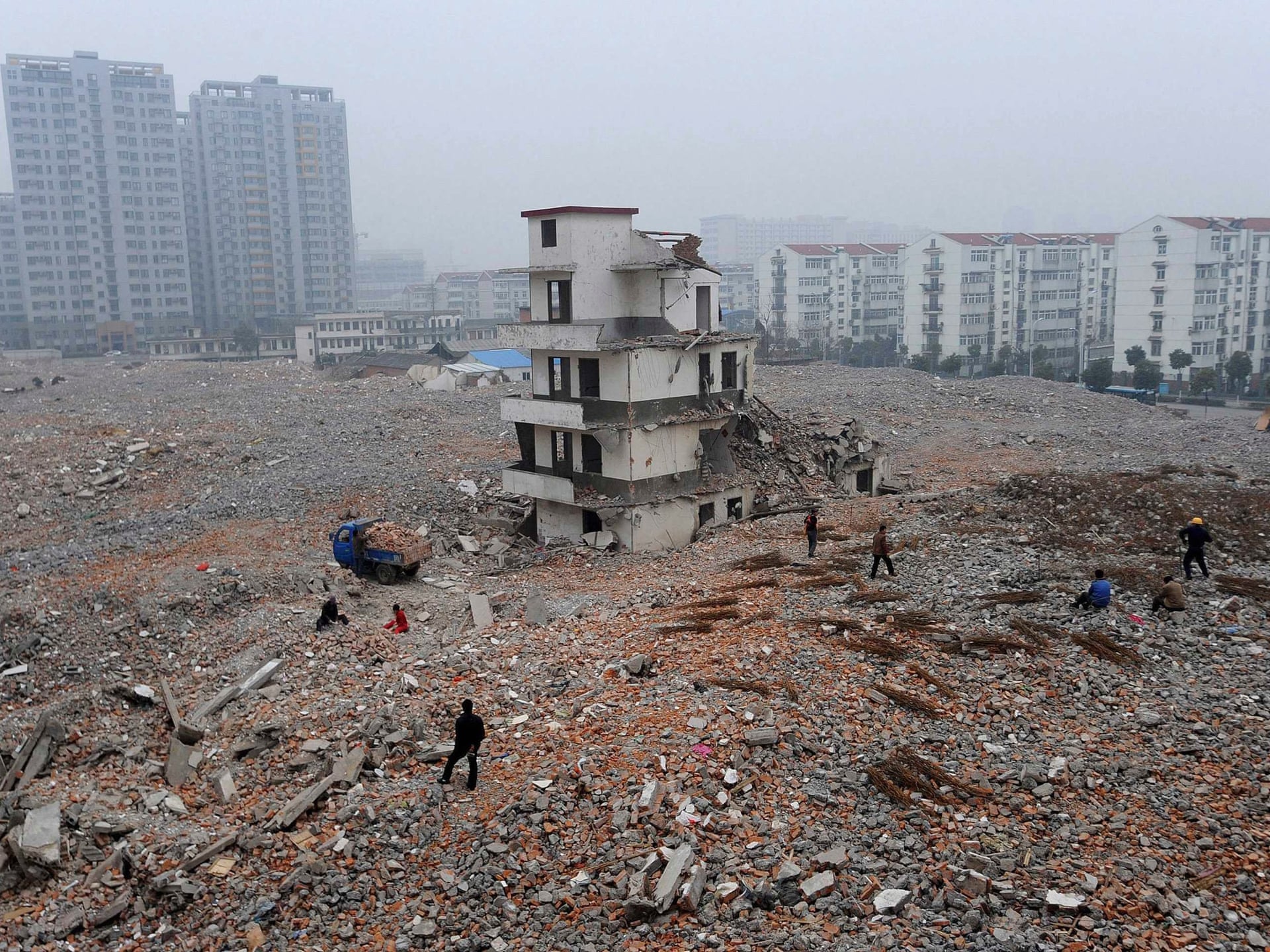
A partially demolished nail house on a construction site in Hefei, Anhui province, in 2010: photo by Jianan Yu/Reuters via the Guardian, 15 April 2014
Image may be NSFW.
Clik here to view.![]()
Clik here to view.

Owner Zhao Xing collects water near his partially demolished nail house at a construction site in Kunming, Yunnan province, in 2010. Water and electricity supplies to his house had been cut: photo by Reuters via the Guardian, 15 April 2014
Image may be NSFW.
Clik here to view.

#CaliforniaDrought Let @JerryBrownGov know you want to #unfrackcal #CAdrought cc @MadBitcoins: image via Hattori Hanzo @Oni_n_Hanzo, 3 April 2015
#CaliforniaDrought water restrictions don't apply to thirsty #frackerss: image via simon boxer @simonboxer, 3 April 2015
SMDH!! RT @michaelallenmar: California used 70 million gallons of water in Fracking in 2014s: image via TheRedWineGal @TheRedWineGal, 3 April 2015
Image may be NSFW.
Clik here to view.![Embedded image permalink]()
Clik here to view.

What California drought? #StanfordInvite: image via Kevin Liao @RunLiao, 3 April 2015
Image may be NSFW.
Clik here to view.![]()
Clik here to view.

A home swimming pool in Rancho Mirage: photo by Damon Winter/The New York Times, 4 April 2015
Image may be NSFW.
Clik here to view.

Image may be NSFW.
Clik here to view.![]()
Footprints and a tire in dried mud along the banks of the Salton Sea: photo by Damon Winter/The New York Times, 4 April 2015
Clik here to view.

Footprints and a tire in dried mud along the banks of the Salton Sea: photo by Damon Winter/The New York Times, 4 April 2015
Image may be NSFW.
Clik here to view.![]()
Clik here to view.

A housing development in Cathedral City, near Palm Springs: photo by Damon Winter/The New York Times, 4 April 2015
Image may be NSFW.
Clik here to view.![]()
Clik here to view.
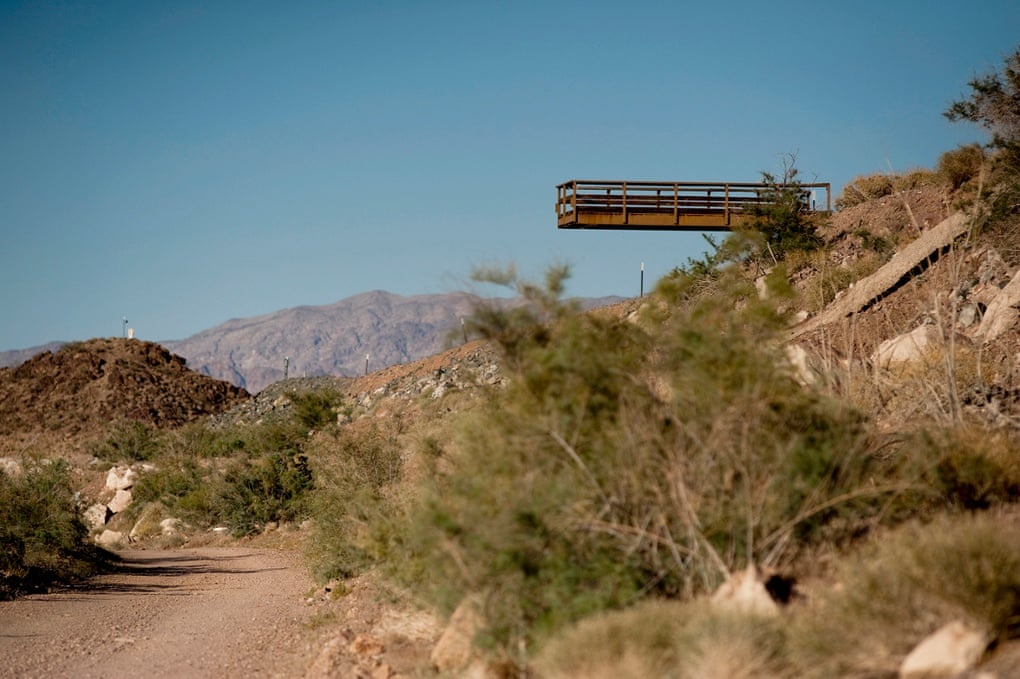
The dried up Lake Meade in Colorado, US.A former fish cleaning station, a pier to nowhere, and a sign alerting visitors to safe swimming practices are relics of its past, before climate change and overuse of the Colorado River caused it to rapidly shrink. Scientists predict the Lake will disappear completely by 2021: photo by Nina Berman/Noor/
Image may be NSFW.
Clik here to view.![]()
Clik here to view.
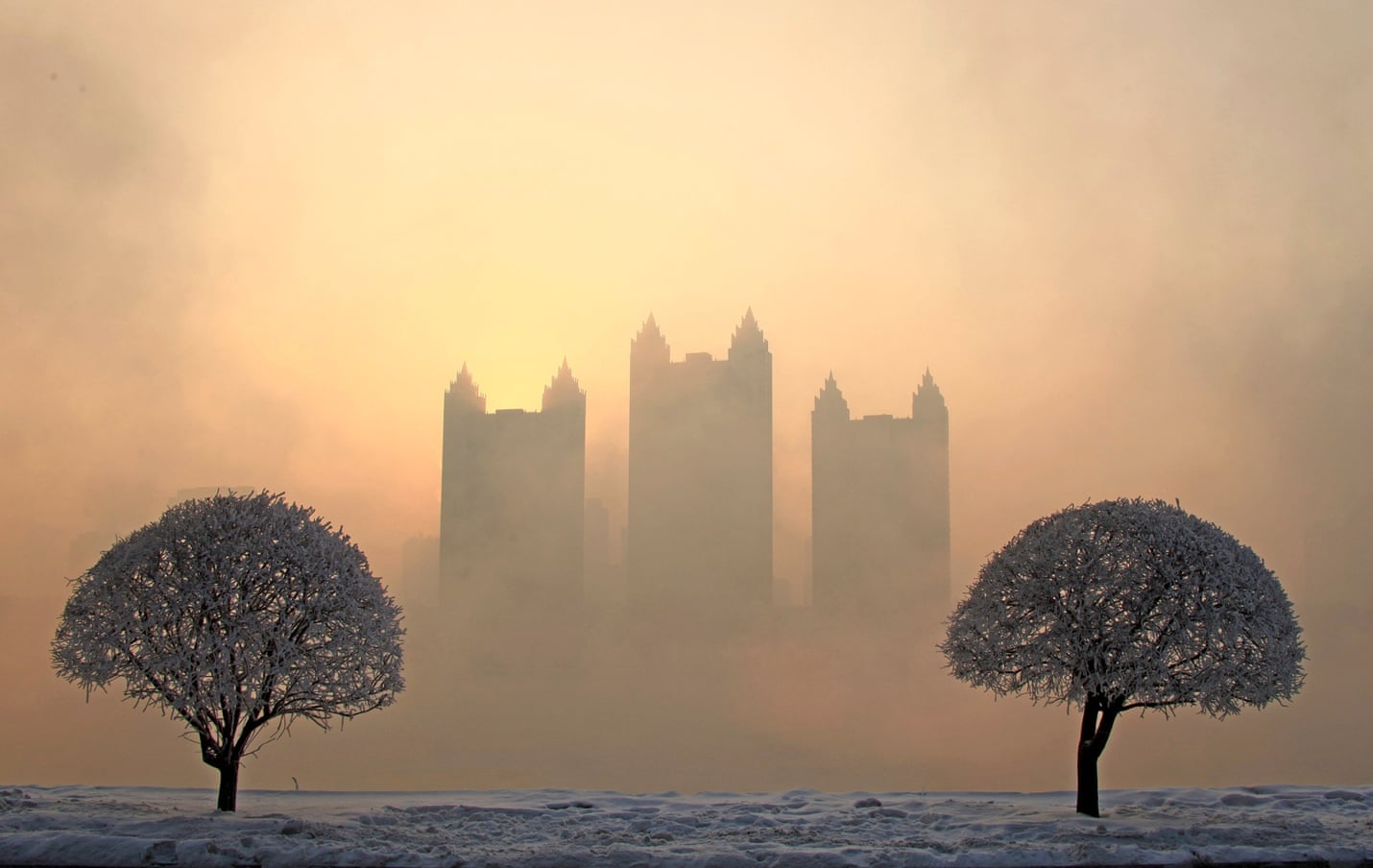
Jilin, China. Smog along the banks of the Songhua river as temperatures reach minus 14C. The air quality index in north China’s Jilin province has risen to 260, indicating high pollution: photo by ChinaFotoPress via the Guardian, 22 January 2015
Image may be NSFW.
Clik here to view.![]()
Clik here to view.
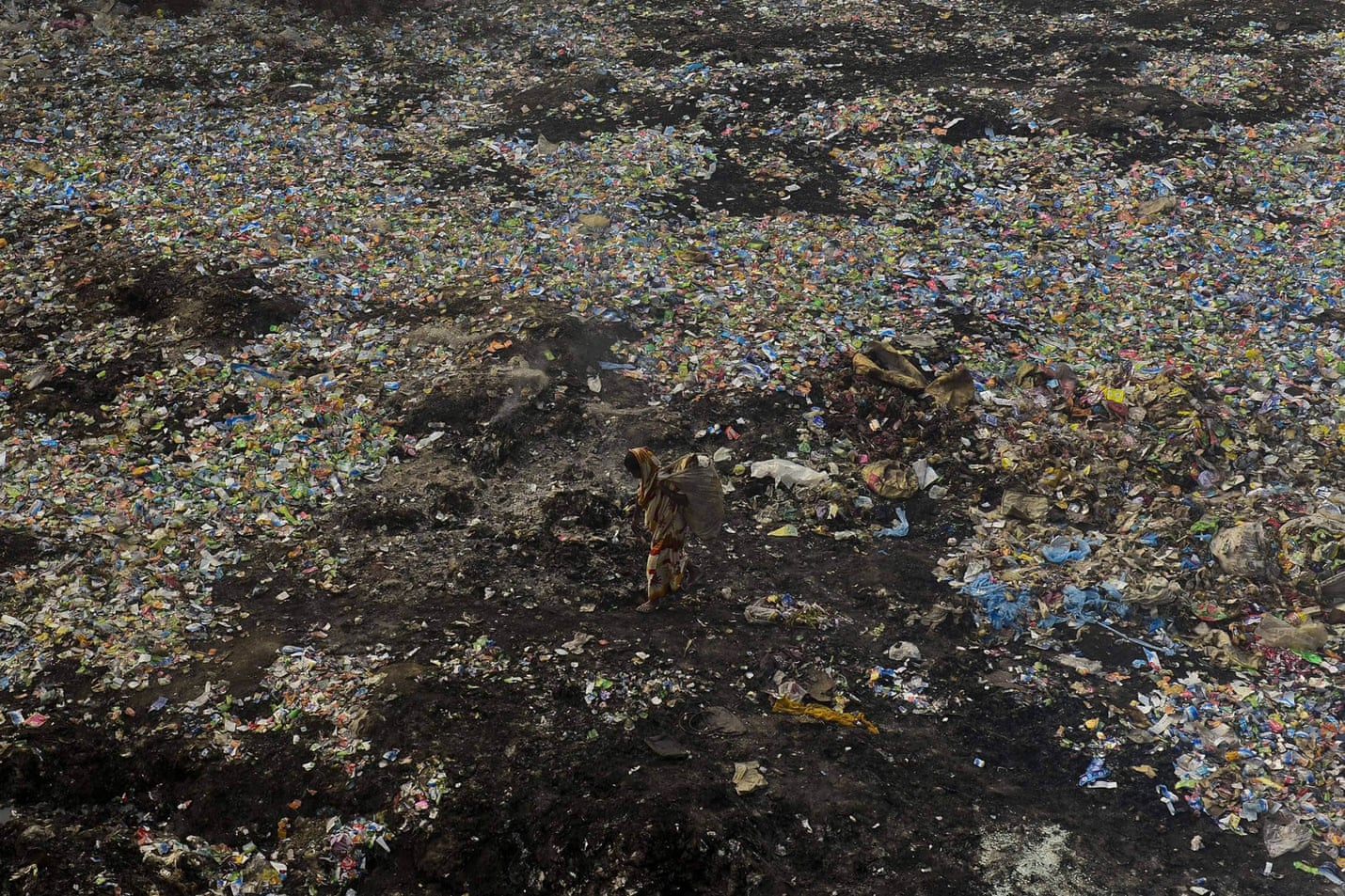
In Bangladesh, a woman searches the riverside in Dhaka for any plastic she can sell for recycling. Around a third of the city’s 15 million residents live in poverty: photo by Munir Uz Zaman/AFP via the Guardian, 13 December 2014
Image may be NSFW.
Clik here to view.![]()
Clik here to view.
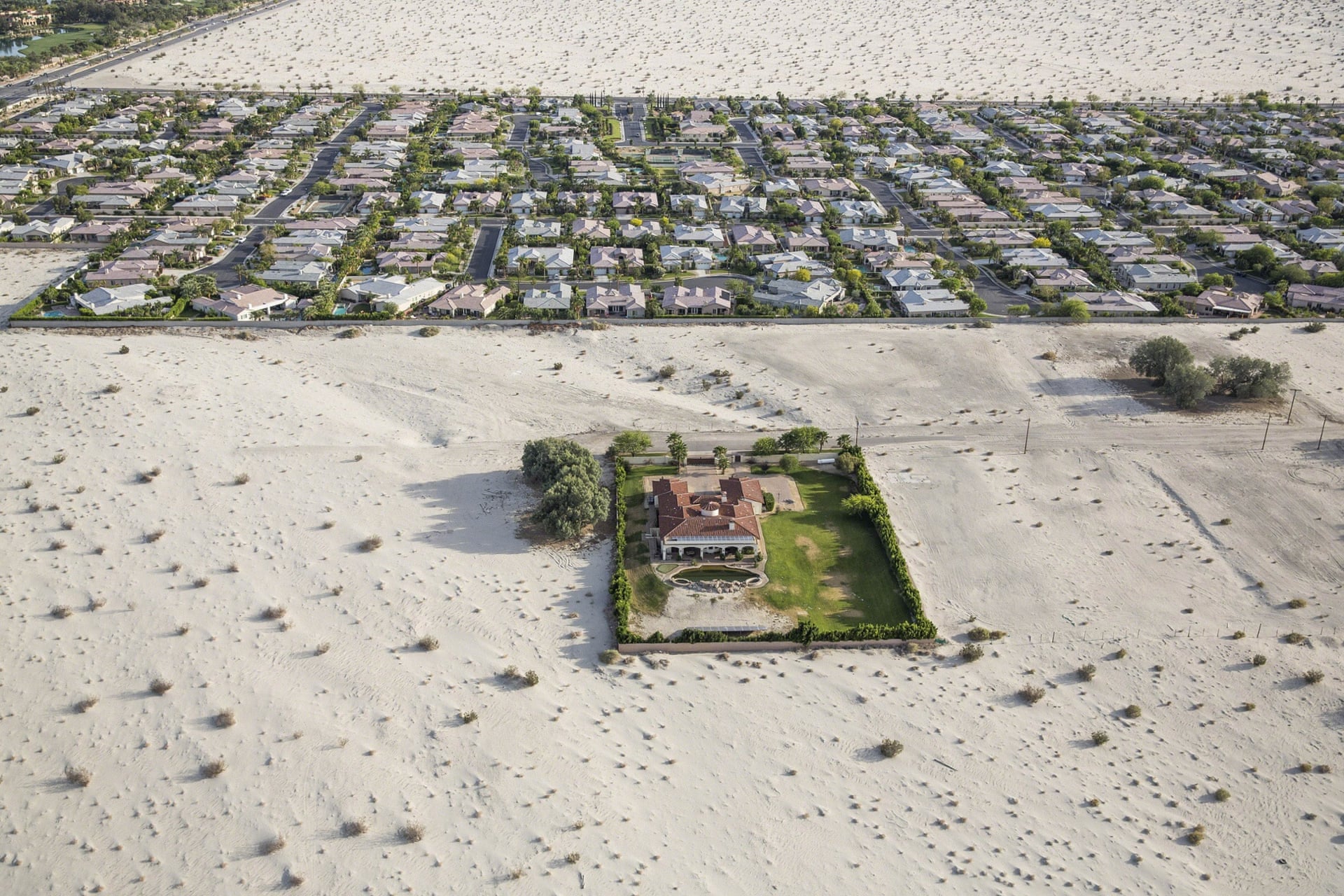
The encroaching desert surrounds homes in the golf resort city of Rancho Mirage, southern California. A fourth year of drought has prompted state governor Jerry Brown to order a 25% cut in domestic water consumption: photo by Damon Winter/New York Times/Redux/Eyevine via the Guardian, 11 April 2015
Every one of the neighbours has a special exemption as well or so it seems from all those wet lawns in the morning
but it's
every
over
developed
cemetery
or golf course
or intensive agricultural
unit
and soon enough, not a drop left for man or beast or tireless dancer to drink
Image may be NSFW.
Clik here to view.![]()
Clik here to view.

Jodhpur, India. This city in Rajasthan is known as the blue city, as the highest caste of priestly Hindus painted their houses that colour and later the rest of the population followed suit: photo by Adnan Abidi/Reuters via he Guadian, 10 April 2015
Image may be NSFW.
Clik here to view.![]()
Clik here to view.

Diyarbakir, Turkey. Boys play football in Dagkapi Square during a duststorm: photo by: Ilyas Akengin/AFP via The Guardian, 10 April 2015
Image may be NSFW.
Clik here to view.![]()
Clik here to view.

Homes in Rancho Mirage, California, in the Coachella Valley. Gov. Jerry Brown has ordered a 25 percent statewide reduction in non-agricultural water use: photo by Damon Winter/The New York Times, 4 April 2015
Image may be NSFW.
Clik here to view.![]()
Clik here to view.

Nanking. A ‘nail’ house blocks the road outside a residential block. ‘Nail houses’ is the term for buildings whose owners refuse to accept relocation compensation: photo by Feature China/Barcroft Media via The Guardian, 11 April 2015
Image may be NSFW.
Clik here to view.![]()
Clik here to view.
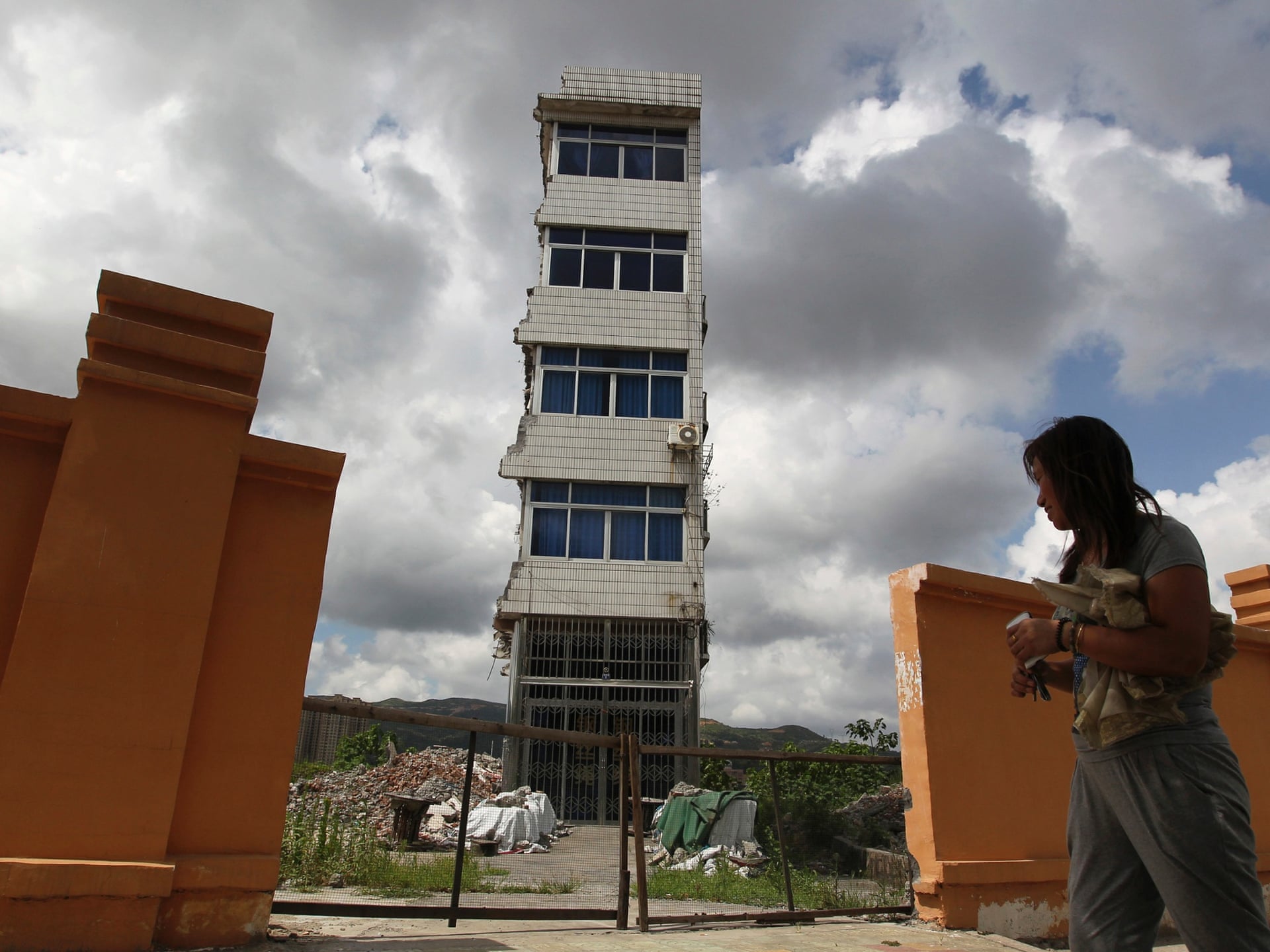
Zheng Meiju [to right of photo, not seen] outside her nail house in Rui'an, Zhejiang province, in July 2013. She has been living in the partially demolished home for nearly a year, even though the water and electricity supply were cut: photo by China Stringer Network/Reuters via the Guardian, 15 April 2015
Image may be NSFW.
Clik here to view.![]()
Clik here to view.

Zheng Meiju outside her nail house in Rui'an, Zhejiang province, in July 2013. She has been living in the partially demolished home for nearly a year, even though the water and electricity supply were cut: photo by China Stringer Network/Reuters via the Guardian, 15 April 2015
What Climate Change? #CaliforniaDrought: image via Mike Garrett @THEMike Grarrett, 3 April 2015





